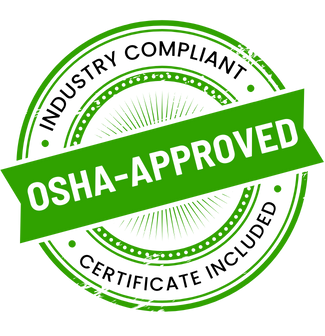Reasonable Suspicion Training for Alcohol and Substance Abuse (US)
Satisfied Customers
Learning Objectives
- Identify your company’s responsibilities regarding substance abuse prevention.
- Recognize the behaviors that violate Federal Motor Carrier Safety Administration, or FMCSA, drug and alcohol policies.
- Know what to do and what not to do during the process of identifying employees who may be abusing a substance.
- Identify the indicators of substance abuse.
Course Outline
-
1. Introduction
- Welcome
- Introduction
- Learning Objectives
-
2. Employer Responsibilities
- Substance Abuse Prevention Regulations
- What Are Safety-Sensitive Positions?
- DOT FMCSA Drug and Alcohol Policy Summary
- Your Company’s Responsibilities
- Knowledge Check: Company Responsibilities
-
3. Violations
- What Is a Drug and Alcohol Policy Violation?
- Additional Drug and Alcohol Rule Violations
- Prescription Medications
- Driver Prohibitions
- Prescription Medication Exceptions
- OTC Medications
- Learning Activity: Drug and Alcohol Policy Violations
-
4. Step 1: Initial Suspicion
- Identifying Employees Who May Be Using Drugs or Alcohol
- Learning Activity: Identifying Drug or Alcohol Users
- Step 1: Have an Initial Suspicion
- Workplace Indicators and Substance Abuse
- Performance Problems Don’t Always Equal Substance Abuse
- Focus on Performance
- Presence of Substances
- Physical Indicators
- Emotional Indicators
- Action Indicators
- Absenteeism
- Safety-Related Incidents
- Work Patterns
- Relationships
- Knowledge Check: Initial Suspicion
-
5. Step 2: Conduct an Employee Interview
- Identifying Employees Who May Be Using Drugs or Alcohol
- Step 2: Conduct an Employee Interview
-
6. Step 3: Determine Reasonable Suspicion
- Identifying Employees Who May Be Using Drugs or Alcohol
- What Is Reasonable Suspicion?
- Step 3: Reasonable Suspicion of Drug and Alcohol Use
- Knowledge Check: Reasonable Suspicion
-
7. Step 4: Conduct Testing
- Identifying Employees Who May Be Using Drugs or Alcohol
- Reasonable Suspicion and Drug and Alcohol Testing
- Step 4: Conduct Testing
- Substance Testing
- Alcohol Testing – Process
- Alcohol Testing – Results
- Drug Testing – Process
- Potential Problems with Drug Testing
- Alcohol and Drug Testing – Incomplete Specimens
- Accidents and Drug and Alcohol Testing
- Knowledge Check: Conduct Testing - Scenario 1
- Knowledge Check: Conduct Testing - Scenario 2
- Knowledge Check: Conduct Testing - Scenario 3
- Knowledge Check: Conduct Testing - Scenario 4
- Knowledge Check: Conduct Testing - Scenario 5
- Knowledge Check: Conduct Testing - Scenario 6
- Drug and Alcohol Testing
- Knowledge Check: Conduct Testing
-
8. Step 5: Help the Employee Home
- Identifying Employees Who May Be Using Drugs or Alcohol
- Step 5: Help the Employee Home
- Knowledge Check: Help the Employee Home
-
9. Step 6: Follow Up and Document
- Identifying Employees Who May Be Using Drugs or Alcohol
- Step 6: Follow Up and Document
- Additional Testing
- Consequences
- Knowledge Check: Follow Up and Document
-
10. Drivers Returning to Work
- FMCSA Clearinghouse
- Clearinghouse Use
- Checking the Clearinghouse
-
11. Conclusion
- Roadblocks to an Effective Drug and Alcohol Policy
- Your Responsibilities
- Summary
Group Discount for Corporate Accounts

VIDEO TESTIMONIAL
FAQ
Why is controlled substance abuse and alcohol training for transportation supervisors essential?
What topics are covered in the drug and alcohol abuse training for dot supervisors?
Can transportation supervisors conduct random drug and alcohol testing on their own?
Is the reasonable suspicion training dealing with drug and alcohol abuse for managers and supervisors?
How does reasonable suspicion training for supervisors contribute to workplace safety?
Who is required to have a reasonable suspicion training certificate?
Can the reasonable suspicion checklist be customized to fit your company’s policies?
What is OSHA drug and alcohol policy?
Does drug and alcohol training for employees include testing?
Join our mailing list
Get announcements, industry updates and promotional offers.









